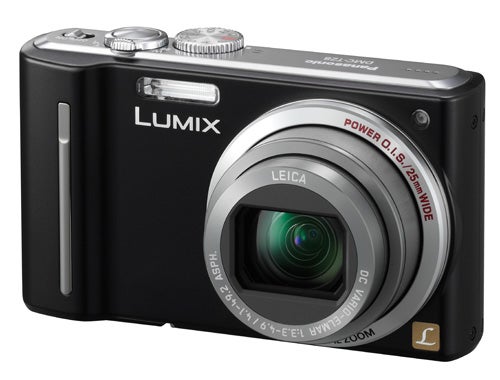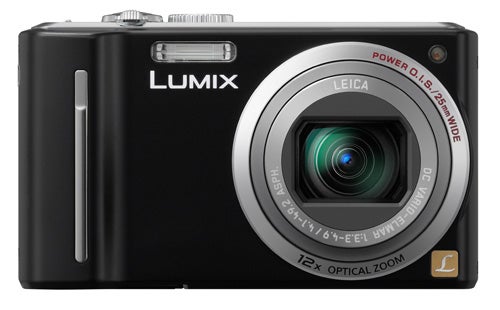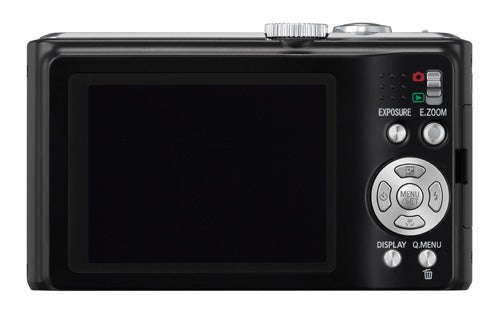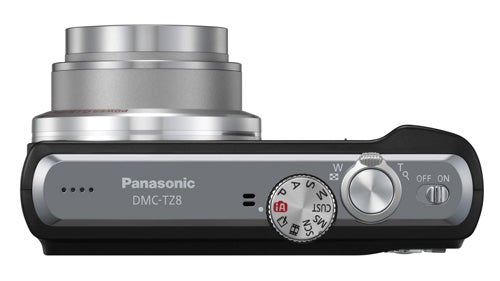Panasonic Lumix DMC-TZ8 Review
Panasonic Lumix DMC-TZ8
A 12x optical zoom compact with HD video and manual exposure control

Verdict
Key Specifications
- Review Price: £219.00
Panasonic’s TZ range of compacts has produced cameras with impressive zoom lengths for a fair few years now, of which the TZ8 is one of the latest additions. This slim camera somehow manages to contain a 12x optical zoom, making it TARDIS-like in its ability to conceal such a feature. This aside the TZ8 can also shoot 720p HD video and gives the user full control of shutter speed and aperture. 
The Leica name on the front of the lens gives this camera a degree of prestige, and with a 25mm wide angle it seems as if Panasonic has approached the optics in the correct manner. The slight frame on the TZ8 belies the features within, which also include a high definition movie mode that allows the full magnification to be used when recording. Much like a DSLR the TZ8 also gives complete control of the shutter speed to capture fast moving subjects and the aperture to increase the amount of the photo in focus.
There’s an intelligent auto mode for those looking to give control over to the camera, as it caters the scene mode to the subject or lighting conditions. The 12x zoom also has an amount of automatic assistance in the form of an optical image stabiliser. This is something of an impressive extra for a compact camera as few come with the feature, and should make finding focus at the top end of the zoom far easier. With such a small, light body to hold, the stabilisation should come into play frequently.
The looks of the Panasonic Lumix TZ8 aren’t vastly different from those preceding it, adhering to a compromise between form and function. The body is impressively thin for a camera with such a large zoom, standing at just under 33mm thick. Thanks to the smooth lines the TZ8 avoids looking too boxy and dated, making itself appear far more modern in the process. Coming in either silver or black helps, as neither looks like some of the more gimmicky shades a number of manufacturers produce.
As with the majority of the compacts of this ilk, the TZ8 isn’t exactly awash with buttons. Very little of the attractive shell is spoilt with dials and switches, with the majority of the work being done by the multi-use D-Pad. Beyond that there are minimal buttons, although the mode dial will be familiar to any DSLR users out there. The manual controls can be easily found here to allow for the majority of the settings to be altered. Neither does the small dial feel weak or flimsy, mimicking its removable lens siblings.
The zoom slider is similarly well put together, reacting well to each delicate flick or lengthy pull. The only real annoyance is the playback/record switch, which is a touch too small. It also has a nasty habit of getting caught when taking the camera out a case, changing the mode without the user’s input, although this is a minor foible. The buttons dotted around the D-Pad do suffer somewhat from being recessed a touch too far into the body of the camera, especially where the body curves towards the screen. This means the corner of a finger or fingernail needs to be used in order to activate the relevant setting, especially true for those with larger hands.
Thankfully the menu system is clear and colourful enough that going beyond the buttons isn’t too much of a chore. The manual modes are accessed via the Exposure button once the correct setting is engaged, then toggled via the D-pad.
With such a large optical zoom on the front of the camera it would be surprising if the performance wasn’t affected in some way at the top end. In the case of the TZ8 it leads to the focus being a lot more temperamental. This can be quite frustrating, especially when the subject isn’t static for long periods, but once locked on the images are almost always sharp and well exposed. This means that if a soft image is returned it’s generally due to user error rather than the camera, which returns a number of red, flashing error messages to keep the photographer informed.
When the camera does decide the conditions are at optimum levels the images returned are superbly sharp, putting a number of similarly specified cameras to shame. With a multi-zone focusing system the frame quickly becomes filled with green squares, making it clear which portion will be concentrated on. When in manual mode a half press of the shutter also gives an exposure preview, which is a handy way of determining if the settings adopted are beneficial or detrimental to the end image quality. When stepping away from taking full control of the camera the iAuto mode is quite useful at the wider angle of the focal length, but zooming fully in can add an unnecessary delay to snapping the shot. For those who would like to avoid changing too many settings the Program mode is perfectly serviceable when utilizing the zoom at advanced lengths. 
Colour quality is impressively balanced when on the standard, automatic settings and in bright sunlight, not straying too far into the overly vivid territory. There can be a slight magenta cast on occasions, but it isn’t noticeable enough to spoil the images. In lower light the pixel smoothing comes into effect to keep the noise levels down to a minimum, making the colours a touch less graduated than in perfect conditions. Fortunately the smoothing isn’t overly aggressive as to ruin any detail, keeping just on the right side to maintain sharpness. At the wider angle dynamic range keeps things balanced enough to maintain a consistent exposure across the majority of the image, from the brighter areas to the shadowed corners.
Verdict
The Panasonic TZ8 isn’t a pleasant surprise, as its predecessor the TZ7 has similar pedigree, but an impressive continuation of previous form. The only criticisms are slight and infrequent, making the end performance of this compact some of the most balanced available on a compact currently on the market.
”Over the next few pages we show a range of test shots. On this page the full size image at the minimum and maximum ISO settings have been reduced to let you see the full image, and a series of full resolution crops have taken from original images at a range of ISO settings to show the overall image quality. These pictures were taken indoors using shaded natural light. ”
—-

This is the full frame at 80 ISO.
—-

80 ISO.
—-

100 ISO.
—-

200 ISO.
—-

400 ISO.
—-

800 ISO.
—-

1600 ISO.
—-

This is the full frame at 1600 ISO.
—-
”Here are some general test shots to help evaluate the camera’s overall image quality, including dynamic range, colour rendition and the zoom range of the lens. Some pictures may be clicked to download the full size original image.”
—-

The wide angle end is equivalent to 25mm.
—-

The telephoto end is equivalent to 300mm.
—-
—-
—-
Trusted Score
Score in detail
-
Value 8
-
Image Quality 9
-
Build Quality 8
Features
| Camera type | Digital Compact, Digital SLR |
| Megapixels (Megapixel) | 12.1 Megapixel |
| Optical Zoom (Times) | 12x |
| Image Sensor | 1/2.33-inch CCD |
| Image Stabilisation | Optical |
| LCD Monitor | 2.7 in, 3 in |
| Flash modes | Auto Flash, Flash ON, Flash OFF, Red-eye Reduction |
| Video (max res/format) | 1280 x 720, 640 x 480 |
| Memory card slot | Secure Digital (SD) Card, Secure Digital High Capacity (SDHC) Card, Secure Digital Extended Capacity (SDXC) |

